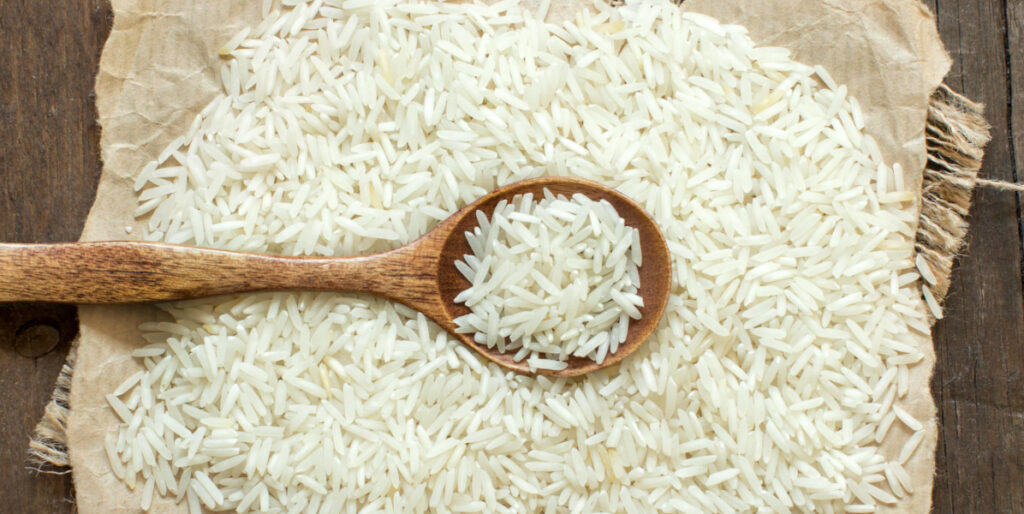Fortified Rice to Fight Malnutrition

Last week, the Modi Government accorded its approval for supply of fortified rice throughout the Targeted Public Distribution System (TPDS) under the National Food Security Act (NFSA), Integrated Child Development Services (ICDS), Pradhan Mantri Poshan Shakti Nirman-PM POSHAN [erstwhile Mid-Day Meal Scheme (MDM)] and Other Welfare Schemes (OWS) of Government of India in all States and Union Territories (UTs) by 2024 in a phased manner.
The entire cost of rice fortification (around Rs. 2,700 crore per annum) would be borne by the Govt. of India as part of food subsidy till its full implementation upto June, 2024.
In last year’s Independence Day speech( August 15, 2021), Prime Minister Narendra Modi had announced the fortification of rice distributed under various government schemes, including the public distribution system (PDS) and midday meals in schools, by 2024 so that nutrition is provided to every poor person of the country to overcome malnutrition and lack of essential nutrients in women, children, lactating mothers etc. as it poses major obstacles in their development.
The Prime Minister’s idea floated from the sordid fact that India has very high levels of malnutrition among women and children. According to the Food Ministry, every second woman in the country is anaemic and every third child is stunted.
Fortification of food is considered to be one of the most suitable methods to combat malnutrition.
Rice is one of India’s staple foods, consumed by about two-thirds of the population. Per capita rice consumption in India is 6.8 kg per month. Therefore, fortifying rice with micronutrients is an option to supplement the diet of the poor.
The Food Safety and Standards Authority of India (FSSAI) defines fortification as “deliberately increasing the content of essential micronutrients in a food so as to improve the nutritional quality of food and to provide public health benefit with minimal risk to health”.
Various technologies are available to add micronutrients to regular rice, such as coating, dusting, and ‘extrusion’. The last mentioned involves the production of fortified rice kernels (FRKs) from a mixture using an ‘extruder’ machine. It is considered to be the best technology for India.
The fortified rice kernels are blended with regular rice to produce fortified rice. Dry rice flour is mixed with a premix of micronutrients, and water is added to this mixture. The mixture is passed through a twin-screw extruder with heating zones, which produces kernels similar in shape and size to rice. These kernels are dried, cooled, and packaged for use. FRK has a shelf life of at least 12 months.
As per guidelines issued by the Ministry of Consumer Affairs, Food and Public Distribution, the shape and size of the fortified rice kernel should “resemble the normal milled rice as closely as possible”. According to the guidelines, the length and breadth of the grain should be 5 mm and 2.2 mm respectively.
Under the Ministry’s guidelines, 10 g of FRK must be blended with 1 kg of regular rice.
According to FSSAI norms, 1 kg of fortified rice will contain the following: iron (28 mg-42.5 mg), folic acid (75-125 microgram), and vitamin B-12 (0.75-1.25 microgram).
Rice may also be fortified with zinc (10 mg-15 mg), vitamin A (500-750 microgram RE), vitamin B-1 (1 mg-1.5 mg), vitamin B-2 (1.25 mg-1.75 mg), vitamin B-3 (12.5 mg-20 mg) and vitamin B-6 (1.5 mg-2.5 mg) per kg.
The cooking of fortified rice does not require any special procedure. The rice needs to be cleaned and washed in the normal way before cooking. After cooking, fortified rice retains the same physical properties and micronutrient levels as it had before cooking.
Coming back to the decision of the Modi government, the following three phases are envisaged for full implementation of the initiative:
Phase-I: Covering ICDS and PM POSHAN in India all over by March, 2022 which is under implementation.
Phase-II: Phase I above plus TPDS and OWS in all Aspirational and High Burden Districts on stunting (total 291 districts) by March 2023.
Phase-Ill: Phase II above plus covering the remaining districts of the country by March 2024.
As part of vigorous implementation efforts, the Department of Food and Public distribution has been coordinating all ecosystem related activities with all relevant stakeholders like State Government / UT, line Ministries/Department, Development Partners, Industries, Research Institutes etc. The FCI and State Agencies are already engaged in procurement of fortified rice and so far nearly 88.65 LMT of fortified rice has been procured for the supply and distribution.
Earlier, the Centrally Sponsored Pilot Scheme on “Fortification of Rice and its Distribution under Public Distribution System” was implemented for a period of 3 years beginning from 2019-20. Eleven (11) States – Andhra Pradesh, Gujarat, Maharashtra, Tamil Nadu, Chhattisgarh, Uttar Pradesh, Odisha, Telangana, Madhya Pradesh, Uttarakhand and Jharkhand successfully distributed the fortified rice in their identified districts (one district per State) under the pilot scheme.
At the time of the PM’s announcement last year, nearly 2,700 rice mills had installed blending units for production of fortified rice, and India’s blending capacity stood at 13.67 lakh tonnes in 14 key states, according to figures provided by the Ministry. FRK production had increased rapidly from 7,250 tonnes to 60,000 tonnes within 2 years.
The cost of upgrading an existing rice mill varies in accordance with the volume of fortified rice produced. An investment of Rs 15-20 lakh would be required to upgrade a rice mill of operating capacity 4-5 tonnes/hour, the Ministry had said last year. The Ministry had estimated that the cost of producing FRK with iron, folic acid, and vitamin B-12 would be around Rs 0.60 per kg.
Meanwhile, Fortified rice is being packed in jute bags with the logo (‘+F’) and the line “Fortified with Iron, Folic Acid, and Vitamin B12” so as to be distinguished from the regular rice.



